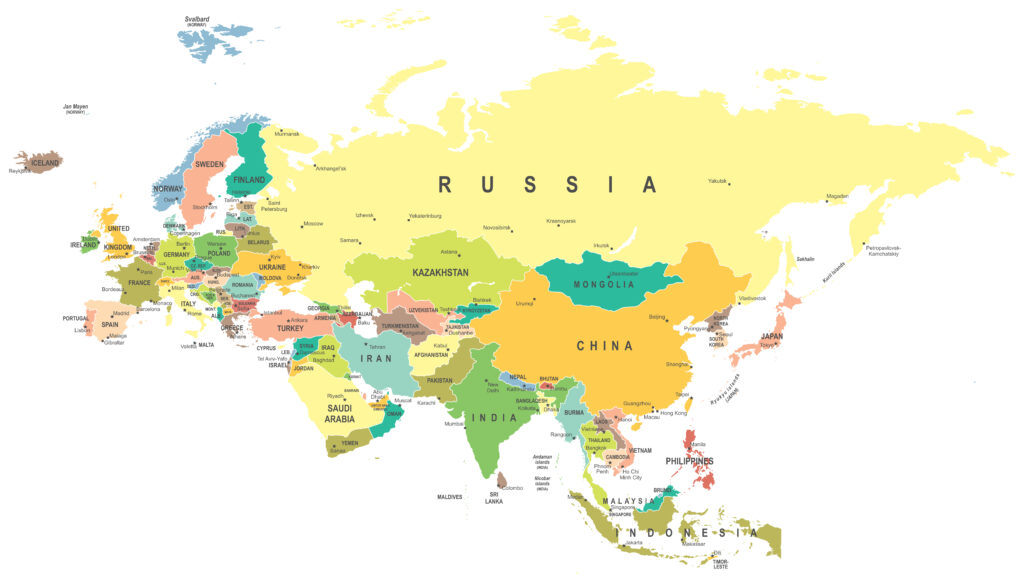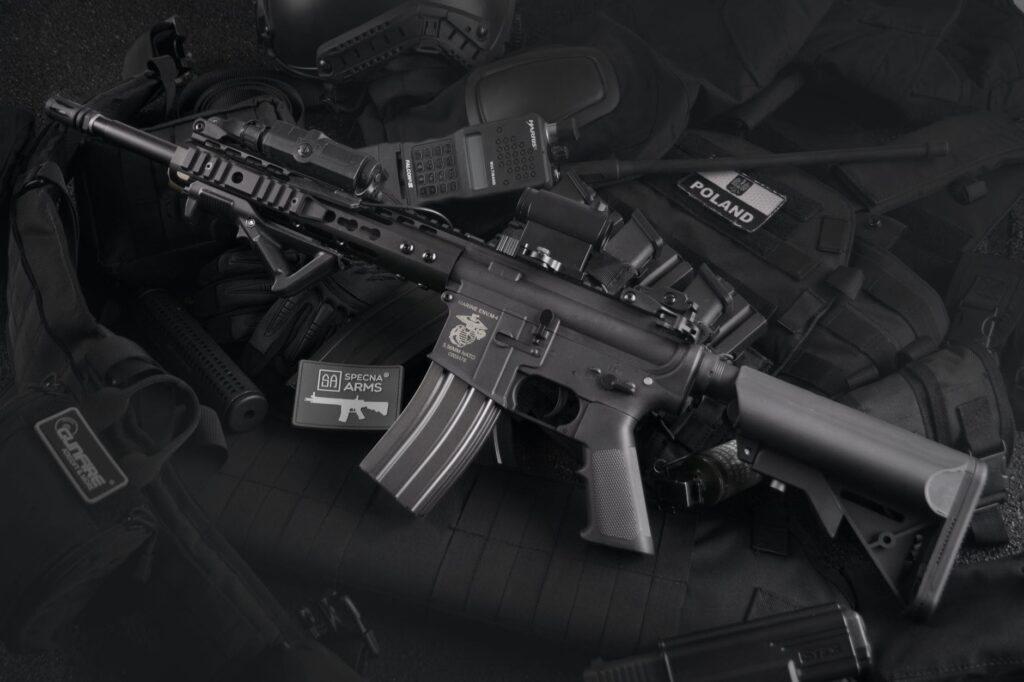
By Gilbert Doctorow, Blog, 12/16/22
My watching and reporting on Russian state television news and talk shows might best be described as ‘random sampling.’ I do not spend my days seated before my computer monitor tuned to www.smotrim.ru broadcasts of Sixty Minutes or Evening with Vladimir Solovyov. After all, Sixty Minutes has both early afternoon and early evening broadcasts each weekday with different guests and breaking news subjects, while Solovyov’s shows Sunday through Thursday nights run for two hours beginning at 10 pm CET.
However, when I find something of unusual interest, which happens once every few days, I stick with it. Such was the case with Solovyov’s program last night and in this brief bulletin I will share with readers what impressed me most. The subjects I describe below are important for anyone following the rapid changes in global geopolitical alignments these days, yet they do not appear either in the Western major media or even in specialized commentary that circulates in the U.S. diplomatic and academic communities on daily digests to which I subscribe.
First, one of Russia’s leading orientalists and China specialists commented on the changes at the top of the Chinese Communist Party which appeared from the new line-up that Xi installed at the recent Party Congress. From the standpoint of Russian analysts, Xi has brought to the top a constellation of pro-Russian personalities who share his predilection for the Russian alliance, while removing known pro-American officials seen to be anti-Russian. What this means is that the long talked about plans to intensify Chinese-Russian economic cooperation will finally be implemented in the coming several years. In turn, that poses for the Russians the challenge to define where they want Chinese investments and technology to come in and how to manage the relationship in such a way that dependence on the West, which has just been terminated by the sanctions regime, is not replaced by dependence on the Chinese, which also would compromise Russian economic sovereignty. In the first order, we are likely to see heavy Chinese investment in improving the logistics infrastructure that supports the existing trade in hydrocarbons and other commodities. Additional railways and port facilities are at the top of the list. This is essential if the bilateral trade now pointed towards 200 billion dollars is to rise to a new plateau.
This same orientalist directed attention to another challenge that Russia’s government has yet to address if the closer relations with China are to be sustainable over the long term. He suggests taking a page from the American playbook. The Americans, he noted, have long practiced the cultivation of those they identify as future leaders of countries they want to bring into their sphere of influence. These prospective leaders are educated in the States and inculcated in American values. Russia, he insists, must do the same with those who are expected to be future leaders of China, all in the cause of Soft Power.
Another topic of particular interest on last night’s Solovyov show was the recently announced proposal of Turkish President Erdogan for the Turkish, Russian and Syrian leaders to sit together and define a modus vivendi, a path of cooperation in the region. The readiness of Erdogan to sit at a table with Bashar Assad was identified as a breakthrough, since he has been the last to recognize the legitimacy of the Assad regime. The prospects are that this change in the Turkish position will result in a joint position regulating the Kurdish question on their common frontier. This, in turn, will lead to the expulsion of all foreign troops from Syria. Those ‘foreign troops’ are, of course, the Americans, whom the Syrians yesterday accused of stealing more than 18 billion dollars worth of oil and agricultural commodities from the Syrian territories they illegally occupy. The realignment of Turkey with Syria is driven, in the view of Solovyov’s panelist, by the Americans’ military backing for Syrian Kurds. It was said to be noteworthy that Iran, which has been a principal backer of Assad during its long civil war, was not invited to the table by Erdogan, whereas Russia is invited. In short, if the Erdogan initiative moves ahead it will spell a major change in Middle Eastern politics and a significant loss of American Soft and Hard power in the region.
Amidst these new issues for discussion by the two different sets of panelists whom Solovyov presented on his show back-to-back, the war in Ukraine held its own thanks to some fiery statements by a retired high military officer who is now the head of the State Duma’s Committee on Defense. His opening remarks were sure to attract riveted attention: he called for the putting in place of plans to bomb London! Why not, he asked rhetorically, given that the British have spoken publicly about the possibility of bombing Moscow. Russia should destroy the military command infrastructure in and around London using either conventional or nuclear arms. Like others on the show, this panelist sees the war through the prism of armed conflict between Russia and NATO, where Ukraine is only the designated territory of combat. From this perspective it will indeed be a ‘long war’ that goes on for many years to come.
Otherwise, the number one Ukrainian topic of the evening was the unprecedented Ukrainian rocket and artillery attack the day before on the provincial capital of Donetsk, which received more than 150 incoming missiles, many from US-provided launchers. None of the blasts was directed against military targets; all struck residential buildings, markets, social infrastructure buildings at morning hours when there would be a maximum of people in the targeted structures or open spaces. Photos from the scene of destruction were put up on the screen and included images of the main cathedral of Donetsk, whose cupola was struck directly by one missile; this was held up as one more demonstration of the ‘satanic’ nature of the Kievan rulers, whose intent was clearly to traumatize the Donbas population.
There were more than a dozen deaths and a great many injured among the civilians from the latest Ukrainian barrage. The conclusion which Solovyov’s panelists reached from this reign of terror that has gone unreported by Western media is that it is high time to wreak destruction on the city of Kiev, not merely on its power generation, so as ‘to wipe the smile off the faces of the Ukrainian Nazi gang.’
Solovyov put up on the screen a video of Vladimir Putin’s televised speech earlier in the day pledging to bring the standard of government services in the Donbas, Kherson and Zaporozhye oblasts including pensions, salaries, available kindergartens and schools up to the level of neighboring provinces of the Russian Federation. One panelist remarked that this is all fine but is achievable only after the region, now legally RF territory, is properly secured against Ukrainian attacks. This was an unsubtle swipe at the President.
Iran also figured among the more interesting points in last night’s talk show. One panelist noted how Western intelligence experts are speculating that Russia is providing missile technology to Teheran under the terms of their new alliance. Nonsense, he commented. The Iranians have gotten substantial technical assistance from North Korea for development of their strike missiles. Thus, Iran today has serial production of excellent ballistic missiles with a 700 km range. It is expected that they will soon have intermediate range missiles under construction, and eventually will be building ICBMs with a 13,000 km striking distance, meaning capable of reaching the continental United States. These achievements are the result of North Korean assistance. What the Russians are now offering Iran is the technology to fabricate satellites, especially the electronics.
Meanwhile the Iran-Russia rapprochement is broadening out in new directions. Leading officials in Russian domestic security last week visited their counterparts in Teheran to lay down channels of consultation on maintaining domestic stability in the face of malicious intervention by the United States and its allies in support of Opposition demonstrations. The panelist remarked favorably on the executions in Iran of two anti-government demonstrators. As he noted, the latest hanging was of a young man who had brutally murdered an Iranian policeman charged with keeping the street marches under control.
One additional newsworthy item on the show’s agenda last night was the interpretation one panelist gave to the recent statement by former German chancellor Angela Merkel that from the beginning she had viewed the Minsk Accords as buying time for Ukraine to rebuild its armed forces after its 2014-15 military defeats in the Donbas. Many commentators, myself included, have explained this remark as self-justificatory in the context of ongoing vilification of Merkel in German media and political spheres for having been ‘soft’ on the Russians during her time in office. However, last night’s panelist said that Merkel’s political statements are never accidental or incidental, but are substantive. Her intention was to ride the current wave of thinking in German political circles by making negotiations with Russia impossible due to total breakdown in mutual trust. This is part and parcel of the ‘long war’ policy against Russia.
Otherwise, as is often the case in recent editions of the show, yesterday’s Evening with Vladimir Solovyov was given over to philosophizing over the new identity Russia must adopt now that its love affair with the West is finally over. The debate is now no longer between Western-oriented Liberals and Conservatives. It is among Conservatives themselves, who have split between Nationalists and Centrists. On this show, the former tend to be represented by Duma members or LDPR party stalwarts and the latter by university deans and think tank presidents.
When leader of the LDPR party Vladimir Zhirinovsky was alive, he was frequently invited onto the Solovyov show and was given unlimited use of the microphone, never interrupted as was so often the practice suffered by other panelists. Now the nationalist positions of Zhirinovsky are advanced by others, including RT editor-in-chief Margarita Simonian and by Duma member Andrey Lugovoy, best known in the West as the KGB operative wanted by the British police on suspicion of murdering Alexander Litvinenko, and by Solovyov himself. I have little doubt that in the weeks ahead we will see the recent prisoner exchange Viktor Bout on the Solovyov program given that he has just been inducted into the LDPR Party.
What all of these Nationalists have in common that sets them apart from the academicians in the Centrist group is strong leanings towards Soviet era mobilization of the whole population of Russia around national defense in the coming ‘long war’ with the USA and NATO. Solovyov himself repeatedly speaks of the need to establish ongoing military training of all able-bodied males so as to prepare a 3-million strong Russian army. As regards the economy, these Nationalists take a dim view of the market and seek state direction of industry.


